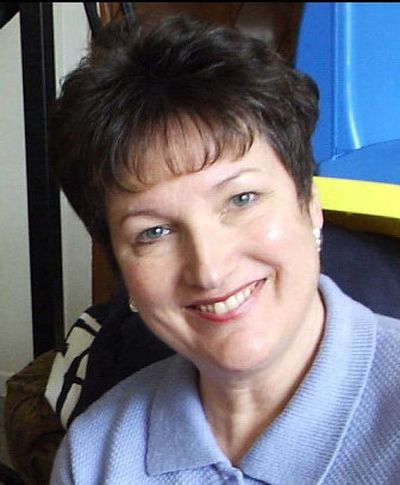Idaho woman seventh suspected CJD victim in state

Kathy Isenberg started a new job at the U.S. Bank branch in St. Maries in May.
She appeared to be in excellent health at age 53 and had never had any surgeries or even a broken bone, said her husband, Jonathan Isenberg.
But less than a month later, she started having problems, particularly with walking. Doctors initially thought her problems were more mental than physical, Jonathan Isenberg said.”Initially, she just was a little unsteady on her feet, and needed someone to hold onto,” her husband said. By mid-August, Kathy Isenberg was confined to a wheelchair and needed 24-hour care from her loved ones.
She uttered her last words to her husband on Aug. 31.
“I came in to see her and her eyes were closed,” he recalled. “I gave her a kiss. She opened her eyes. I told her I loved her and she told me that she loved me.”
By Sept. 1, she lay unresponsive in a Kootenai Medical Center hospital bed.
She died Sept. 5 and is Idaho’s seventh suspected victim of Creutzfelt-Jacob disease (CJD) this year. The disease is extremely rare and one form can be caused by consuming beef contaminated with spongiform encephalopathy, commonly known as mad cow disease.
The most common form is “sporadic” CJD. Only one person in the United States has been confirmed to have the variant, or “mad cow” form of the disease, according to health officials, and that person was believed to have contracted the disease in the United Kingdom.
A team from the National Prion Disease Pathology Surveillance Center in Cleveland, Ohio, recently conducted an autopsy on Kathy Isenberg and will examine her brain tissue to determine what form of the disease she suffered. It will be at least two weeks before they have initial results.
It’s the eighth case the state has investigated this year, according to Tom Shanahan of the Department of Health and Welfare. One case turned out not to be CJD, results are pending on three others, and autopsies were not available on the rest, Shanahan said.
The last confirmed case in Idaho was in 2003 when a Twin Lakes man died from what health officials said was the more common, sporadic form of CJD. The disease is not contagious.
While getting the diagnosis was a death sentence – there is no treatment for the disease – Isenberg’s husband said it also was a vindication of sorts.
The neurologist who initially examined Isenberg thought her problems were psychosomatic, possibly stemming from depression, Jonathan Isenberg said.
She went home from the hospital and got steadily worse. The next time he brought her to the hospital, on Aug. 6, “she could only walk if you were walking in front of her backwards and holding her arm for support.”
Again, they were told there was nothing neurologically wrong, he said, and returned home.
“I was feeding her at this point. I was dressing her. I was bathing her,” he said. “She couldn’t do anything on her own.”
Her eyesight started to go, and they returned to KMC on Aug. 20, where she got a new MRI and a new diagnosis – the doctor was 90 percent sure Kathy Isenberg had CJD.
“She said, ‘You see, I’m not crazy,’ ” said Jonathan Isenberg, who later learned that CJD is often misdiagnosed as other diseases, particularly Alzheimer’s.
Isenberg’s husband and two children, ages 23 and 20, were able to spend just a couple more weeks with her before she died from the rapid progression of the disease.
“It goes so fast,” Jonathan Isenberg said.